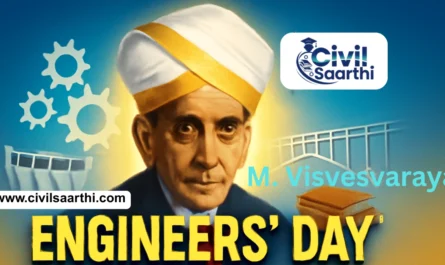The UPSC Civil Services Prelims 2026 is one of the most competitive exams in India, and the time left for preparation often feels insufficient. However, with a structured and consistent approach, even 6 months are enough to cover the entire syllabus effectively.
The key lies in following a realistic and smart daily schedule for UPSC Prelims 6 months plan that focuses equally on concept clarity, current affairs, and consistent revision. This article provides a detailed plan to help you manage time, complete the syllabus, and practice mock tests with confidence.
Why a 6-Month Plan Works for UPSC Prelims 2026
Six months can be a game-changer if used efficiently. Most toppers who started late followed a disciplined 180-day approach dividing time between core subjects, revision, and practice.
In this phase, you don’t need to study everything under the sun. Instead, focus on UPSC-relevant sources, mock analysis, and revision cycles. With 8–10 hours of consistent study daily, you can easily match the preparation level of someone studying for a year.
6-Month UPSC Prelims Study Plan Overview
In this plan, the first two months focus on building a solid foundation, the next two on strengthening concepts, and the last two on testing and refining your preparation.
| Duration | Focus Area | Primary Goals |
|---|---|---|
| Month 1-2 | NCERTs + Concept Building | Strengthen Basics |
| Month 3-4 | Standard Books + Practice | Reinforce Knowledge |
| Month 5 | Mock Tests + Revisions | Identify Weak Areas |
| Month 6 | Final Revision + Confidence Boost | Exam Readiness |
6-Month Daily Schedule for UPSC Prelims 2026 PDF Download
Download the 6-Month Daily Schedule for UPSC Prelims 2026 PDF to get a complete, month-wise roadmap for preparation. This planner includes a daily study routine, subject-wise targets, revision cycles, and mock test schedule. Stay organized, track your progress, and maximize your chances of clearing the UPSC Prelims 2026 with confidence.
6-Month Daily Schedule for UPSC Prelims 2026 PDF Download
Daily Schedule for UPSC Prelims 6 Months Plan
A productive daily routine helps you maintain consistency and balance between different subjects. Here’s a sample full-time aspirant’s schedule:
| Time | Activity |
|---|---|
| 6:00 AM – 7:00 AM | Wake up, exercise, and prepare for the day |
| 7:00 AM – 9:00 AM | Study Session 1 – Core subject (Polity, History, Economy) |
| 9:00 AM – 9:30 AM | Breakfast / short walk |
| 9:30 AM – 12:00 PM | Study Session 2 – Current Affairs + Newspaper analysis |
| 12:00 PM – 1:00 PM | Lunch and power nap |
| 1:00 PM – 3:30 PM | Study Session 3 – Static subject continuation / optional |
| 3:30 PM – 4:00 PM | Tea / relaxation |
| 4:00 PM – 6:30 PM | Study Session 4 – CSAT / Practice papers |
| 6:30 PM – 8:00 PM | Dinner / light exercise / relax |
| 8:00 PM – 10:00 PM | Revision + note-making |
| 10:30 PM | Sleep (7–8 hours essential for focus) |
For working aspirants, adjust the study blocks to early morning and late evening with 4–5 effective study hours daily and extended hours on weekends.
Also Read: UPSC Prelims Syllabus 2026
Month 1: Foundation Phase (NCERT Mastery)
In the first month, your goal is to build a strong foundation by completing all important NCERTs from Classes 6–12 for History, Geography, Polity, Economy, and Science.
Spend at least 8–9 hours daily focusing on concept clarity and note-making. Understand themes rather than memorizing facts. Start reading The Hindu or Indian Express for current affairs and practice 5–10 CSAT questions daily.
Targets for Month 1:
- Complete NCERTs for 5 major subjects
- 10 hours study daily
- Start newspaper reading habit
- Attempt 1 weekly mock test
Month 2: Standard Books & Current Affairs Integration
Once you’ve covered the basics, start reading standard UPSC books. Focus on Laxmikanth (Polity), Spectrum (Modern History), GC Leong (Geography), and Ramesh Singh (Economy).
At this stage, combine static topics with daily current affairs. Create a separate notebook for government schemes, international organizations, and reports. Keep revising NCERT short notes side by side.
Targets for Month 2:
- Complete 3–4 standard books
- Continue newspaper and monthly current affairs
- Practice 2 mock tests per week
- Start short note preparation
Month 3: Concept Strengthening and Practice
By the third month, your base should be ready to move towards revision and practice. Start solving previous 10 years UPSC Prelims papers to understand trends and question framing.
Focus on Environment (Shankar IAS) and Science & Technology topics that are increasingly important in recent years. Start maintaining an error log to record your weak areas.
Targets for Month 3:
- Complete remaining GS subjects
- Attempt 4–5 mock tests
- Revise all subjects once
- Build elimination and guessing techniques
Month 4: Revision and Test Phase
This month is all about strengthening recall and application. Begin your second revision cycle and attempt 2–3 mock tests every week. Focus on analyzing mistakes and improving accuracy.
Pay special attention to high-scoring topics like Polity, Economy, and Environment. Integrate static with current affairs in your revision. Continue 1 hour daily CSAT practice focusing on comprehension and logical reasoning.
Targets for Month 4:
- 2nd revision of full syllabus
- 8–10 mock tests completed
- CSAT accuracy improved
- Strengthened factual recall
Month 5: Intensive Mock Tests and Final Notes
This is the performance phase. Practice full-length mock tests every alternate day under real exam conditions. Use OMR sheets and time yourself strictly.
Start finalizing short notes for each subject – quick facts, timelines, maps, and current affairs highlights. Don’t add new materials; focus on revising and refining your existing notes.
Targets for Month 5:
- Attempt 20+ full-length tests
- Revise all subjects once more
- Focus on time management and accuracy
- Revise monthly current affairs thoroughly
Month 6: Final Revision and Mindset Tuning
The last month before the exam should be entirely dedicated to revision and confidence-building. Revisit your short notes, mock test mistakes, and PYQs.
Avoid new content or coaching materials. Instead, focus on high-yield topics like government schemes, constitutional bodies, geography maps, and environment reports. Simulate exam-like conditions to improve mental readiness.
Targets for Month 6:
- 100% syllabus revised twice
- 5–6 final mock tests
- Revision of short notes daily
- Maintain a calm and confident mindset
Weekly Target Example (Sample Week)
Stick to weekly targets to avoid burnout and ensure balanced coverage of all subjects.
| Week | GS Focus | CSAT Focus | Revision / Test |
|---|---|---|---|
| Week 1 | Polity – Laxmikanth Ch. 1–6 | Quant Basics | NCERT History Revision |
| Week 2 | Modern History – Spectrum | Reasoning | 1 Full Mock Test |
| Week 3 | Geography – GC Leong | Comprehension | 2 Mini Tests |
| Week 4 | Economy – Ramesh Singh | Data Interpretation | Monthly Revision |
Recommended UPSC Prelims Books 2026
| Subject | Book / Source |
|---|---|
| Polity | Indian Polity by M. Laxmikanth |
| History | Spectrum + NCERTs |
| Geography | Certificate Physical Geography by GC Leong |
| Economy | Ramesh Singh |
| Environment | Shankar IAS |
| Current Affairs | Vision IAS / ForumIAS Monthly |
| CSAT | Arihant CSAT Manual / RS Aggarwal |
Time Management Tips for UPSC Prelims 6-Month Plan
- Stick to the timetable: avoid irregular study patterns.
- Revise regularly: short revisions daily and long revisions weekly.
- Analyze every test: don’t just attempt mock tests, review answers carefully.
- Eliminate distractions: keep social media use limited.
- Stay healthy: sleep well and include physical activity daily.
CSAT Preparation Strategy
CSAT is qualifying but often turns out to be the game-changer. Dedicate at least 1–1.5 hours daily for CSAT practice. Focus on reading comprehension, logical reasoning, and basic mathematics. Solve previous year CSAT papers and take timed mock tests to ensure you consistently score above the qualifying cutoff.
Check detailed UPSC CSAT Syllabus 2026 Click here
Common Mistakes to Avoid
- Starting too many books and not revising enough.
- Ignoring CSAT till the last month.
- Relying only on coaching materials without conceptual clarity.
- Skipping daily current affairs.
- Not practicing mock tests under real exam conditions.
Conclusion
Cracking the UPSC Prelims 2026 in 6 months is not about the number of books you read, but how efficiently and consistently you prepare. Follow this daily schedule for UPSC Prelims 6 months plan, revise frequently, and keep testing your knowledge through mocks. Remember discipline, perseverance, and a focused strategy are your biggest assets. If you follow this plan sincerely, you’ll walk into the UPSC exam hall fully prepared and confident.
FAQs on Daily Schedule for UPSC Prelims 6 Months Plan
Q1. Can I crack UPSC Prelims in 6 months?
Yes, with 8–10 hours of focused daily study and strategic planning, it’s possible to clear UPSC Prelims in 6 months.
Q2. How many mock tests should I take before the exam?
Attempt at least 25-30 full-length mock tests and analyze each one for mistakes and weak areas.
Q3. Should I read newspapers daily?
Yes, reading The Hindu or Indian Express for 45 minutes daily builds analytical understanding and helps with current affairs.
Q4. How to balance GS and CSAT?
Study GS in the morning and CSAT for 1-1.5 hours in the evening. Maintain a daily balance instead of studying them separately.
Q5. What should be the revision frequency?
Revise every subject at least thrice before the Prelims, once in Month 3, again in Month 4–5, and finally in Month 6.







